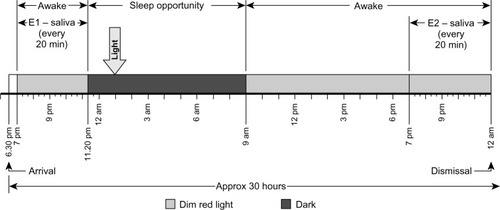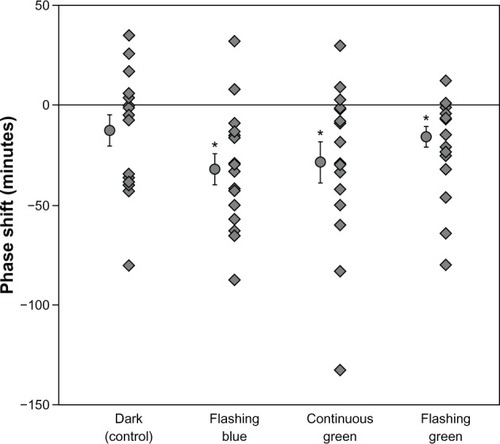Figures & data
Table 1 Light mask irradiance and illuminance
Table 2 Light mask stimulus quantities
Figure 1 Experimental protocol for each 30-hour session.
Abbreviation: DLMO, dim light melatonin onset.

Figure 2 Individual phase shifts in minutes (ordinate) for 16 subjects who completed the four 30-hour experimental sessions (filled diamonds).
Abbreviation: DLMO, dim light melatonin onset.

Table 3 Phase shift, adjusted phase shifts, and nocturnal melatonin suppression for the four 30-hour experimental sessions
Figure 3 Mean ± standard error of the mean adjusted melatonin suppression for the three lighting conditions.
